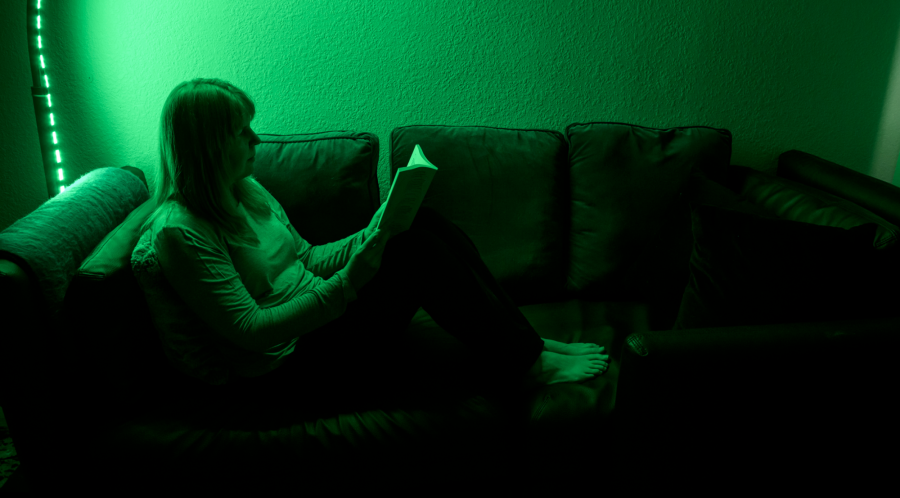Recent new research from the University of Arizona College of Medicine shows that green light therapy has the potential to be a treatment for painful migraines.
According to the Migraine Research Foundation, migraines are the third most prevalent illness in the world. The Mayo Clinic says the condition is characterized by a “throbbing pain or a pulsing sensation, usually on one side of the head. It’s often accompanied by nausea, vomiting, and extreme sensitivity to light and sound.”
These painful episodes can last for different amounts of time spanning from a few hours to weekly episodes. The cause of migraines is still not fully understood.
Migraines and other chronic pain conditions remain difficult to alleviate, with treatments often being limited to pain medication. However, the results from a new clinical trial conducted by researchers at the University of Arizona College of Medicine show signs of another potential treatment option — exposure to green light.
Green Light – The Epiphany
Dr. Mohab Ibrahim, the director of the chronic pain management clinic at the University of Arizona College of Medicine, has been researching green light as a potential source of pain relief for several years. Ibrahim’s brother, who suffered from frequent headaches, would often tell him that just sitting in his garden among some trees would help relieve his headaches. One day, Ibrahim was experiencing a headache of his own. Remembering his brother’s advice, he went to the lush green Reed Park in Tucson. His headache faded away.
He had two theories about what could be the cause of his pain relief. It could be that the trees were releasing chemicals into the air. However, this would be difficult to test as there are many trees and many possible components in an air sample. A second theory came into his mind:
“I thought the color green is predominant in both places. This is a simple hypothesis to test,” Ibrahim said. “Does the color green have analgesic or pain-relieving properties?”
Pursuing this theory, Ibrahim decided to explore the relationship between light and pain in rats. His team exposed rats to different colors of light and measured the rats’ ability to tolerate uncomfortable stimuli (done in an ethical way). They found that green light indeed had the most analgesic or pain-relieving properties.
Conducting the Clinical Trial
Encouraged by these results, Ibrahim and his team got permission to conduct a clinical trial to see whether green light’s analgesic properties were applicable to humans. The trial consisted of 29 participants suffering from episodic or chronic migraines. Patients were instructed to expose themselves to a panel of green LED lights for a period of 1-2 hours each day for 10 weeks.
Ibrahim talked about the advantages of using LED as the method of light exposure.
“We used 525 nm and an LED source. Because of the physical properties of LED, it gives you a range, typically whatever wavelength is indicated plus or minus 10nm,” Ibrahim said. “We had to decide, do we want a specific wavelength with the risk of damaging the retina and visual system, or a range knowing that the wavelength is in that range.”
The results were really promising. The study measured pain by observing the change in the overall frequency of headaches, and through surveys in which patients rated more subjective measures of pain like the intensity of pain, they felt their sleep patterns and other measures of their quality of life.
The frequency of headaches among participants decreased by 60 percent, and a majority of the patients reported an overall decrease in the intensity of their pain by around 50 percent. The other exciting result was that none of the participants reported any negative side effects.
The Important Next Steps
Ibrahim emphasized the fact that this clinical trial is a proof of concept trial. This means that the purpose of the study was to prove that there is indeed a significant relationship between green light exposure and pain relief. Therefore, it is important to understand that this research is still in its preliminary stages. The next steps include:
- Larger Sample Size, Independent Research Centers: One of the biggest limitations of the study is the fact that the sample size was so small. Important next steps would be for different independent groups to test out green light exposure with more patients, and for these groups to optimize different factors such as wavelength, time of exposure, method of exposure, and so forth.
- Other Potential Applications: As scientists learn more about green light therapy and the way it works, research should be conducted to look into what other types of conditions this therapy can be useful for…
- Understanding the Underlying Mechanism: Although a relationship has been established between green light and pain relief, the process that makes this possible is still not fully understood. Various researchers around the country including the team at the University of Arizona are working on finding potential explanations.
This line of research is still in its early stage, but it has the potential to be a non-invasive, effective tool to treat various pain conditions like migraines. If this therapy is shown to be effective by various researchers from different centers, a green light could be added to the toolbox of treatments for pain.
Follow Udbhav Venkataraman on Twitter









